A signature dish of Sichuan cuisine, shredded pork with garlic sauce delivers a sophisticated and addictive taste: tangy, spicy, sweet & sour.
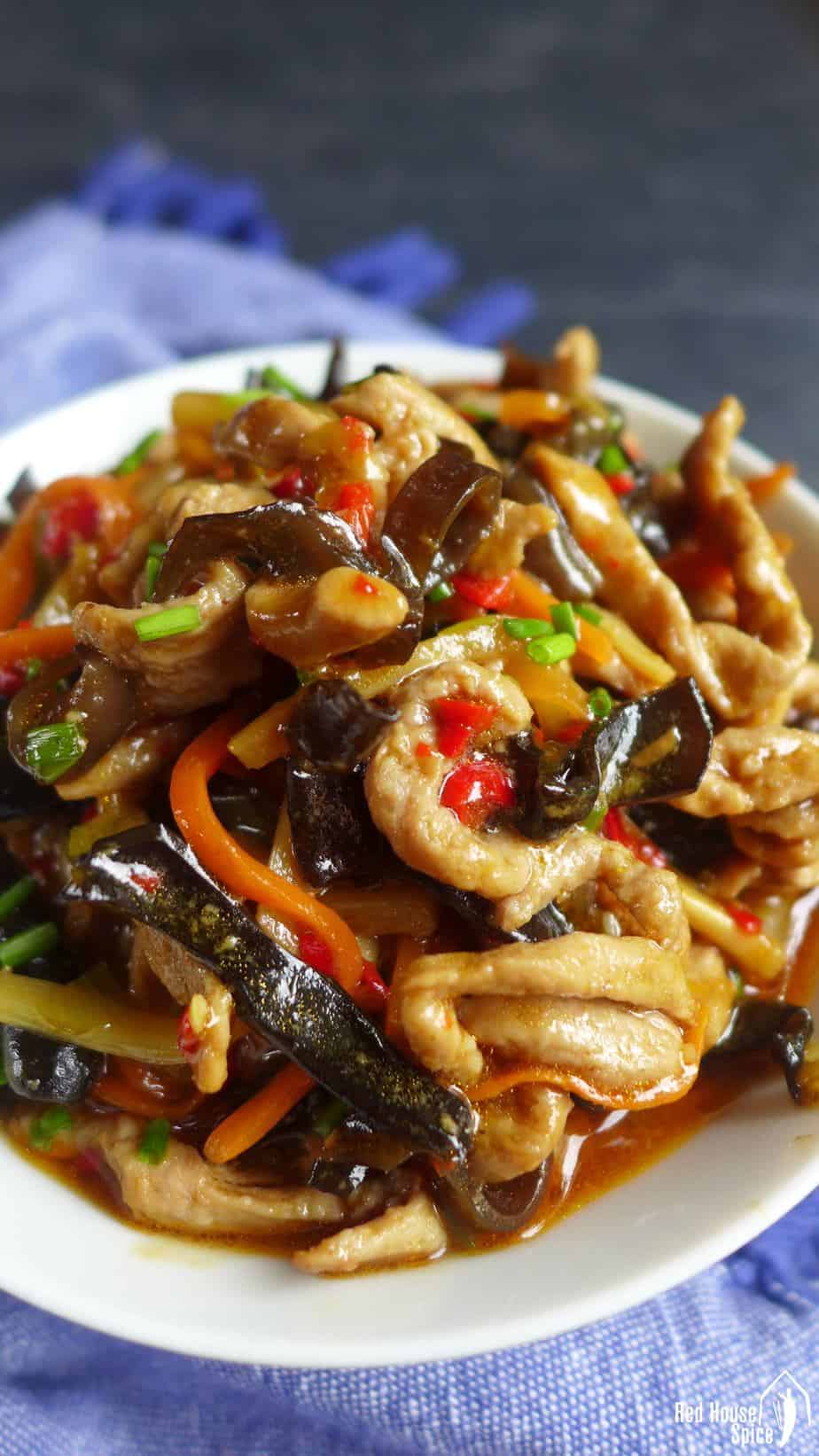
Since the start of my blog, many of my readers expressed an interest in Sichuan cuisine. Today, I’d like to share its signature dish which is believed to be the most ordered delicacy in Sichuan restaurants: Yu Xiang Rou Si (鱼香肉丝, also known as shredded pork with garlic sauce).
“Fish-flavoured” dish without fish
“Garlic sauce” is actually a term invented by Chinese restaurants in the West. It doesn’t indicate the sophistication of the seasoning used in Sichuan shredded pork. Essential ingredients include Sichuan pickled chilli, rice wine, black rice vinegar, soy sauce, sugar and generous amounts of garlic, ginger and spring onion. They create a tangy, spicy, sweet & sour taste known as “Yu Xiang (鱼香)” which literally means fish fragrance.
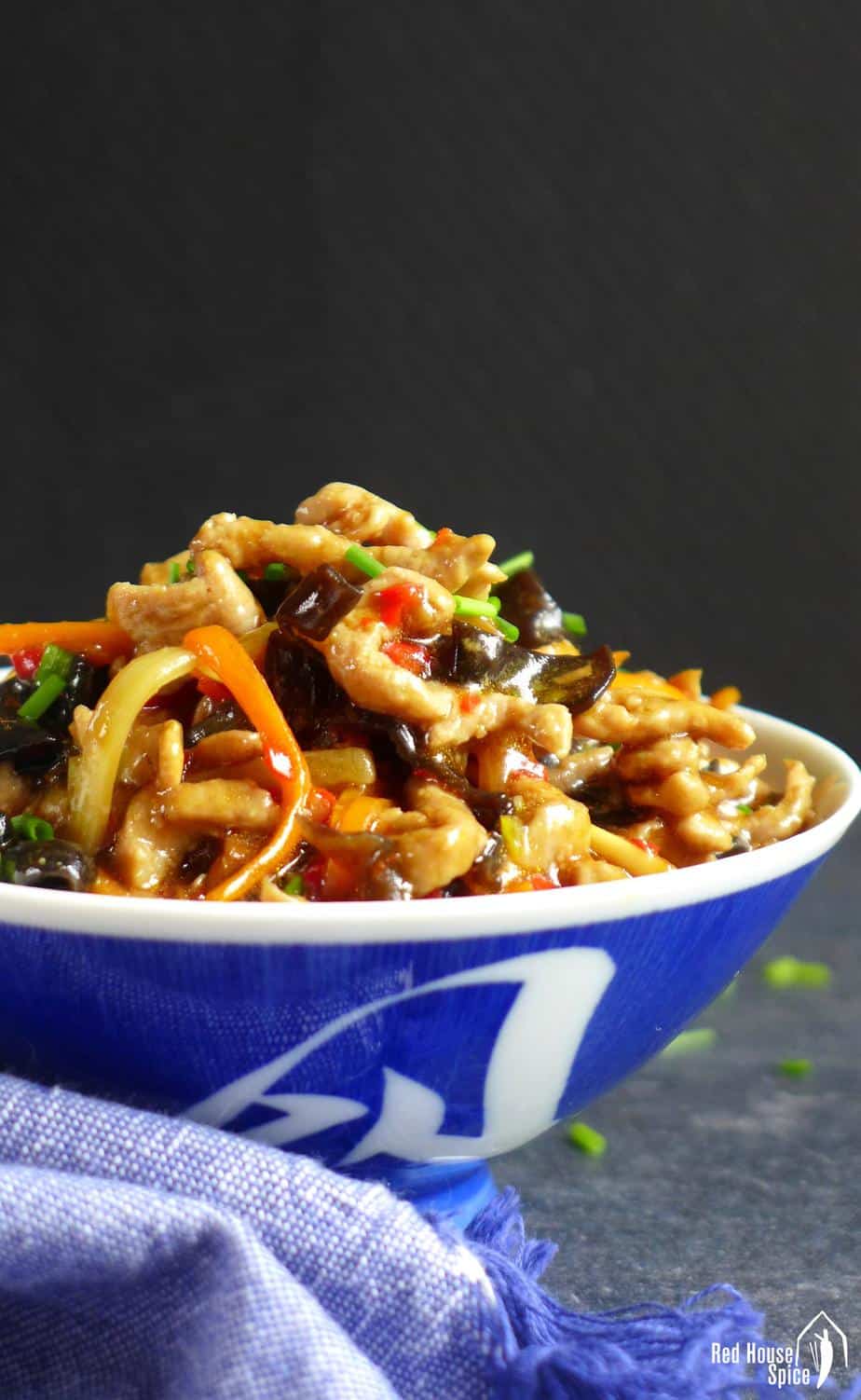
Don’t be surprised not to find any fish (or fish-related items) on the ingredient list. It is believed that the seasoning used in Sichuan shredded pork was inspired by the way fish was traditionally prepared in Sichuan. Popular dishes like Yu Xiang Eggplant (鱼香茄子), Yu Xiang Tofu (鱼香豆腐) call for the same set of ingredients.
Substitute for the key ingredients
If you wish, you may replace pork fillet with chicken breast for this dish. Beef can be an option too as long as you choose a cut ideal for quick stir-fry (e.g. flank steak or skirt steak).
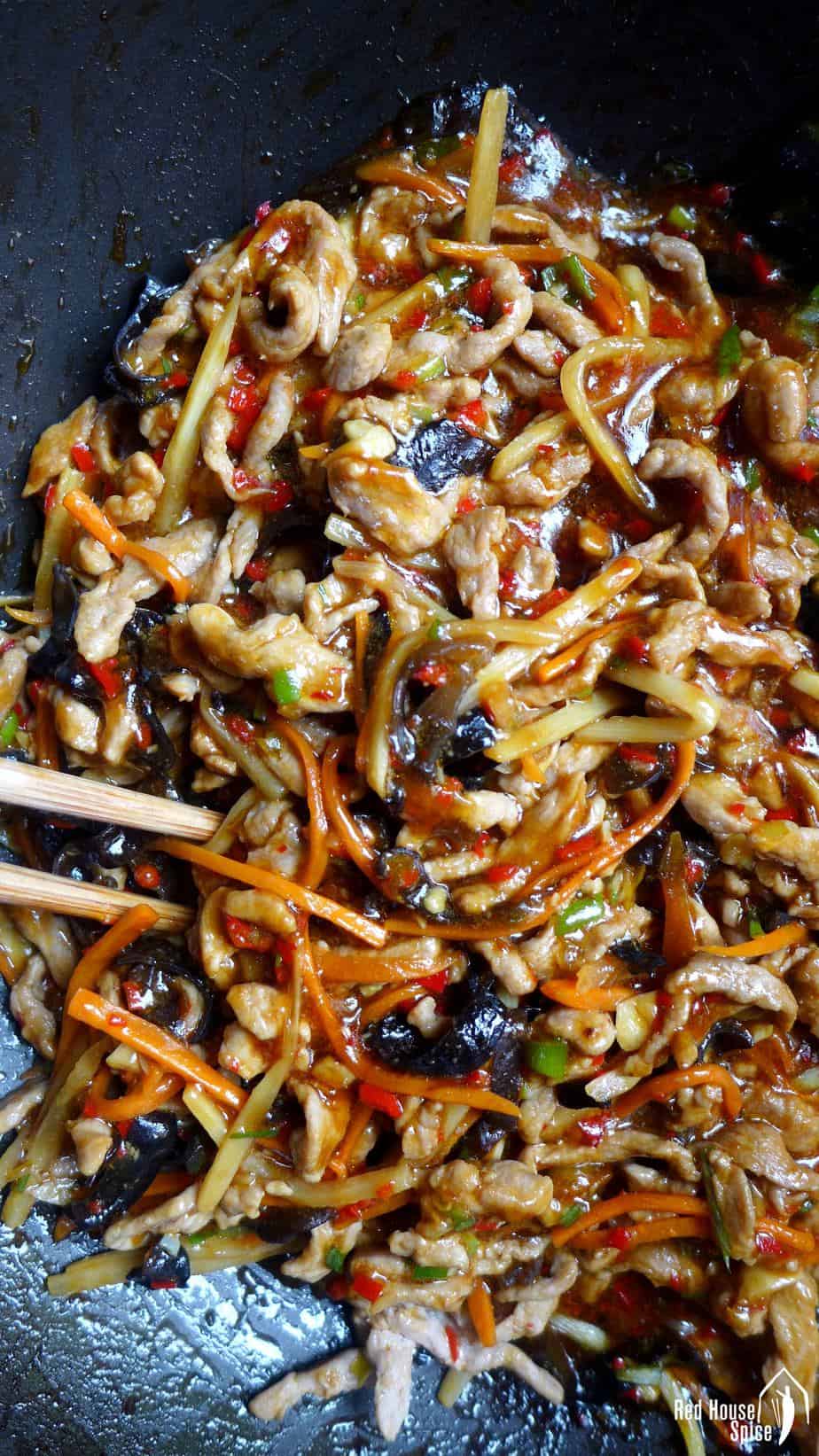
Sichuan pickled chilli (四川泡辣椒) is the soul of Sichuan shredded pork with garlic sauce. It gives the dish a sharp spicy taste as well as an unique fragrance. I guess some of you might find it difficult to get this special ingredient. Living outside China for many years, I understand very well the frustration of not being able to find the “right” ingredients for Chinese cooking.
The good news is I’ve found substitutes which don’t affect the flavour of this dish very much:
- Use homemade pickled chilli garlic sauce
- Use other types of pickled chilli (e.g. Spanish ones)
- Use fresh chillies. Make sure you mince them very well to release their full flavour
Tips on julienne the pork
As you might have realised, there is lots of chopping involved in preparing Sichuan shredded pork with garlic sauce. Every ingredient is either cut into thin strips or finely minced. This seems a labouring job. But believe me, finely chopped ingredients do make a difference to the final taste.
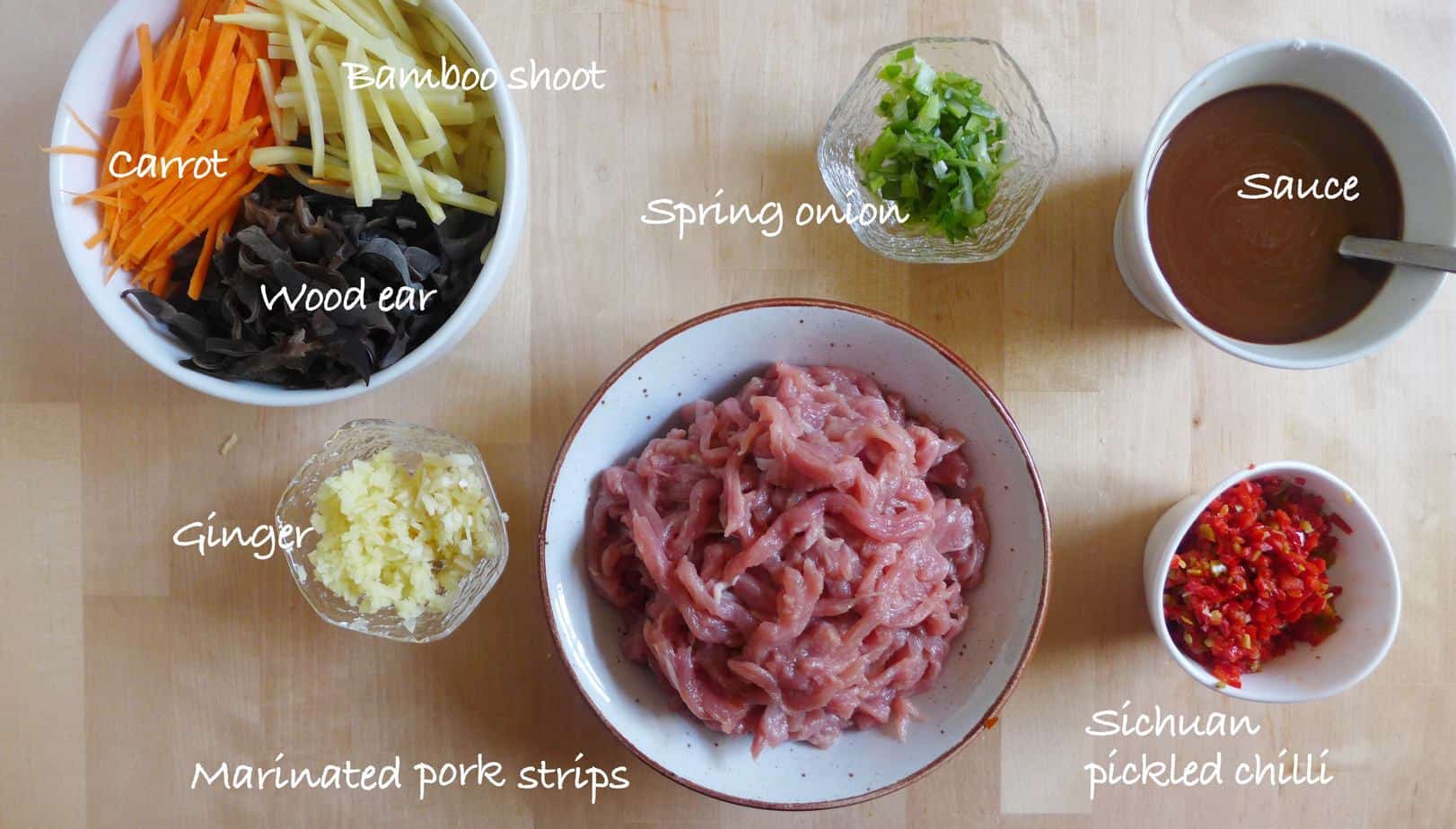
The most challenging part has to be julienne the pork fillet. You first need to slice it then cut into thin strips. Here are my three tips:
- Freeze the meat for a while. It’s much easier to slice a more solid piece of meat. If possible, freeze the pork fillet for a couple of hours beforehand (time may vary depending on the size).
- Make sure the cleaver/knife is sharp. Not only a blunt one makes chopping time-consuming, but also it increases the chances of injury.
- Wet your cleaver/knife with water when cutting to avoid sticking.
Be creative with the vegetables
In any “authentic” version of Sichuan shredded pork with garlic sauce, wood ear (木耳, black edible fungus commonly used in Chinese cuisine) and bamboo shoots are indispensable. They are rather plain in flavour yet provide a crunchy texture to the dish.
Personally, I like being a bit more adventurous with vegetables. Carrot, bell pepper, asparagus, baby corn and celery are on my list of choices. Please feel free to adjust the recipe according to the availability of certain ingredients and of course your own preference.

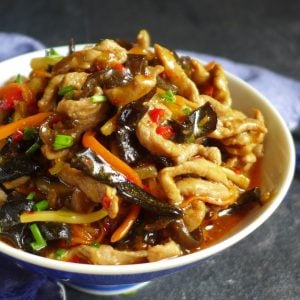
Sichuan shredded pork with garlic sauce (Yu Xiang Rou Si, 鱼香肉丝)
Ingredients
For the meat
- 300 g pork fillet - 10oz
- 2 teaspoon Shaoxing rice wine
- 2 teaspoon light soy sauce
- 3 teaspoon water
- 1 pinch salt
- 1 teaspoon corn starch
For the vegetable
- 2 tablespoon Sichuan pickled chilli - See note 1 for substitute ideas
- 1 teaspoon ginger
- 2 teaspoon garlic
- 60 g pre-soaked wood ear - 0.5 cup (about 5g dried), see note 2
- 60 g bamboo shoots - 0.5 cup
- 40 g carrot - 0.5 cup
- 1 stalk spring onion
For the sauce
- 1.5 tablespoon Shaoxing rice wine
- 1 tablespoon light soy sauce
- 0.5 tablespoon dark soy sauce
- 2 tablespoon black rice vinegar
- 2 tablespoon sugar
- 1.5 tablespoon corn starch
You also need
- 3 tablespoon cooking oil
Instructions
Marinate the meat
- Slice pork fillet then cut into long thin strips (see note 3).
- In a bowl, rub the pork (with your hand) with rice wine, soy sauce, salt and water until no more liquid can be seen.
- Add corn starch then mix well. Set aside.
Prepare the vegetables
- Mince Sichuan pickled chilli (or fresh chilli), ginger and garlic.
- Cut wood ear, bamboo shoots and carrot into thin strips.
- Finely chop spring onion.
Mix the sauce
- Mix all the ingredients for the sauce and stir well.
Stir fry
- Heat up a wok (or a deep frying pan) over high heat. Pour in oil, then stir in marinated pork. Transfer to a plate when the meat becomes pale.
- Fry Sichuan pickled chilli, ginger and garlic in the remaining oil (add a bit more if necessary). Add wood ear, bamboo shoots and carrot.
- Stir fry for half a minute or so then add the pork. Cook a further half a minute.
- Pour in the sauce (stir well beforehand to avoid starch sitting at the bottom). When it becomes thick, turn off the heat then sprinkle spring onion over (see note 4).
NOTES
- Pickled chilli garlic sauce
- Other types of pickled chilli (e.g. Spanish ones)
- Minced fresh chillies
NUTRITION
NUTRITION DISCLOSURE: Nutritional information on this website is provided as a courtesy to readers. It should be considered estimates. Please use your own brand nutritional values or your preferred nutrition calculator to double check against our estimates.



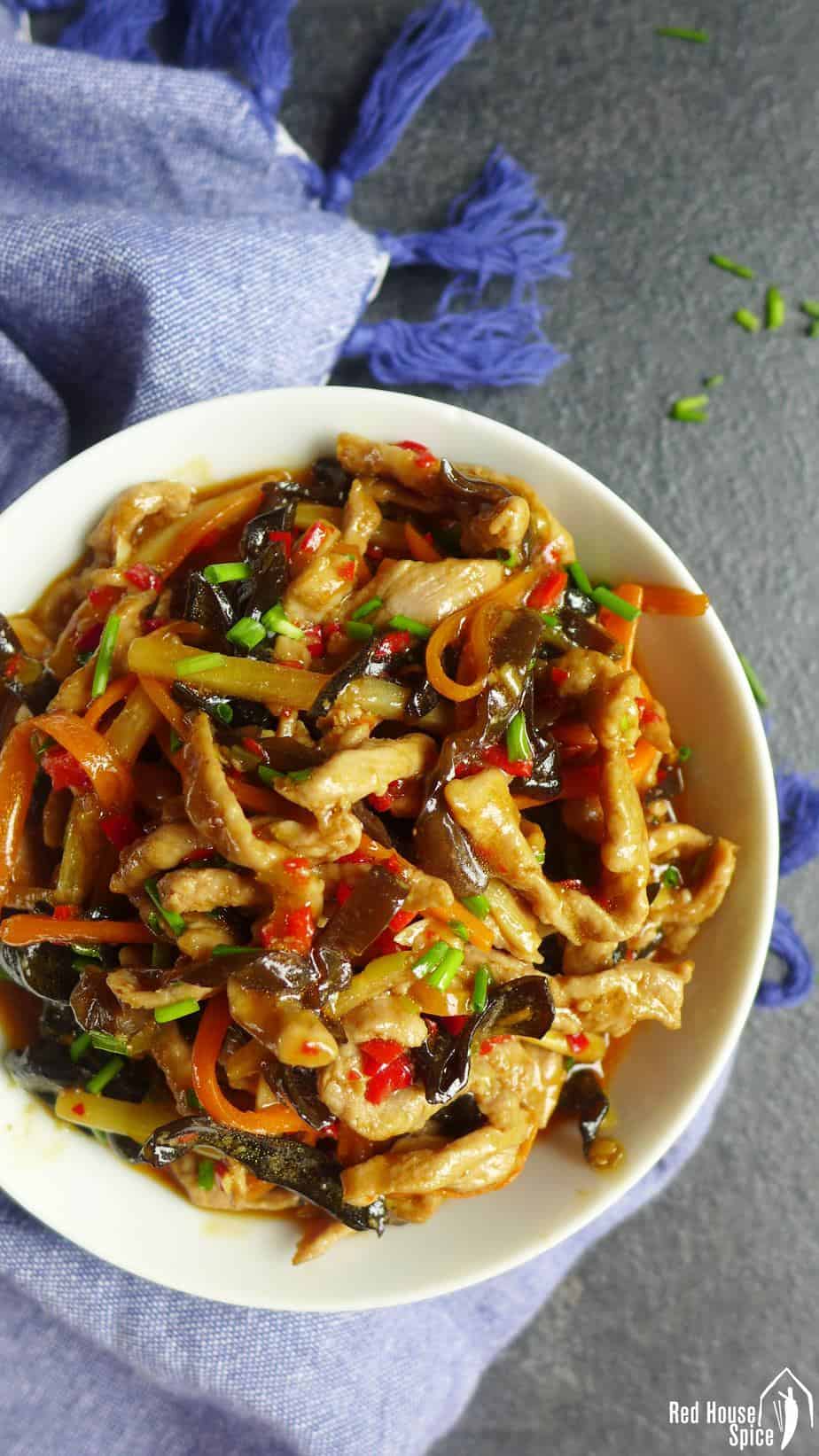



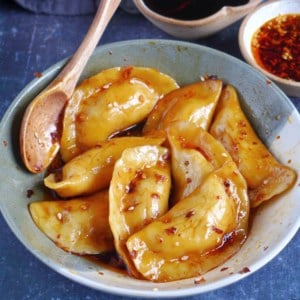
Hi! I saw that someone else had asked if sambal oelek could be substituted for the pickled chili, which is good news since I have a big jar of that already. My question is, can it be substituted 1:1, or is one of those sauces hotter than the other? Should I add something else to get the same flavour as when using the Sichuan pickled chili?
Thank you!
The saltiness of sauces always varies depending on the brands. If using a substitute, I suggest you add less than the suggested quantity and taste to adjust. Happy cooking!